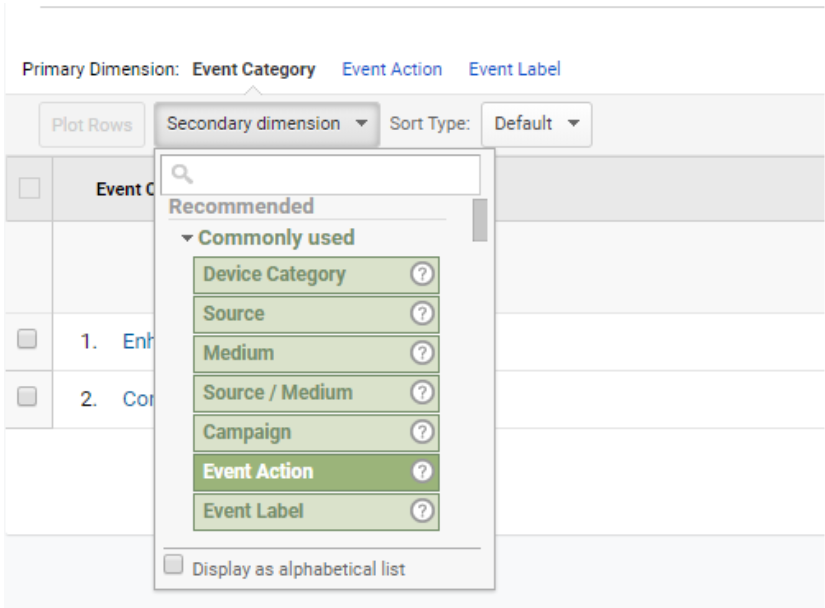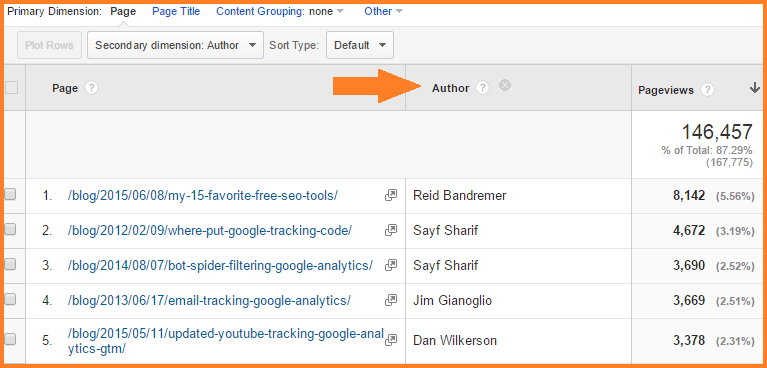Transform Your Analytics Technique With Second Dimension in Google Analytics
By integrating secondary dimensions into information analysis, a new layer of insights emerges, losing light on detailed individual behaviors and interactions. The calculated application of additional measurements holds the essential to unlocking a treasure trove of vital information that can reinvent exactly how services interpret and act upon their information.
Comprehending Secondary Dimensions in Google Analytics
Secondary dimensions in Google Analytics supply added context to key information by enabling individuals to evaluate metrics throughout a 2nd dimension, providing much deeper understandings into user actions and communications on a site. Secondary Dimension in Google Analytics. While primary measurements provide fundamental data factors such as pageviews, bounce rate, and session period, secondary measurements use an even more detailed view by segmenting the primary information additionally. This division enables customers to analyze metrics in combination with an additional dimension, such as web traffic resources, demographics, or customer habits
Advantages of Using Additional Dimensions
Using additional dimensions in Google Analytics uses a tactical advantage by boosting the deepness of analysis and giving an extra comprehensive understanding of individual interactions and behavior on a site. By incorporating secondary measurements, experts can obtain important insights into the efficiency of particular segments or variables within their information. This allows an extra comprehensive exam of customer behavior beyond surface-level metrics, enabling a much deeper expedition of the factors affecting user involvement and conversions.

Just How to Apply Second Measurements
When incorporating second measurements in Google Analytics, one necessary action is to select the appropriate metrics and measurements to improve the evaluation procedure. Clicking on this switch will open up a drop-down menu listing numerous dimensions that can be added to your primary measurement for deeper understandings.
After choosing the ideal secondary dimension, such as 'Source/Medium' or 'Device Category,' Google Analytics will certainly present the information in a more comprehensive layout, permitting you to cross-analyze different aspects of customer actions. Bear in mind to experiment with different combinations of second and main measurements to discover useful patterns and trends that can inform your advertising and marketing methods. By applying secondary measurements attentively, you can obtain a more detailed understanding of your internet site or app performance and make data-driven choices to maximize your digital visibility.
Studying Information With Secondary Measurements
Improve your information analysis in Google Analytics by incorporating secondary dimensions to dive much deeper into customer actions patterns and maximize your digital advertising and marketing techniques effectively - Secondary Dimension in Google Analytics. By including secondary dimensions to your main check my site information, you can gain valuable understandings that can aid you make educated choices concerning your web site or app efficiency
Evaluating data with additional dimensions allows you to sector your key data even more, supplying an extra thorough sight of individual interactions. As an example, incorporating the key dimension of 'source/medium' with a secondary dimension like 'landing page' can reveal which details web pages are driving traffic from various resources. This info can be critical in refining your web content strategy or maximizing your marketing projects to raise conversions.
Moreover, using additional measurements enables you to recognize relationships between different metrics, aiding you comprehend the impact of various elements on customer behavior. Whether it's analyzing demographics alongside user involvement metrics or gadget categories with conversion prices, secondary measurements encourage you to discover surprise patterns and patterns that can lead your marketing efforts.
Maximizing Efficiency With Secondary Measurements
To improve the effectiveness of information evaluation and decision-making in Google Analytics, incorporating additional dimensions is crucial to enhancing efficiency metrics and acquiring much deeper insights into individual habits patterns. By making use of additional dimensions, analysts can delve past surface-level data and discover important connections that might otherwise go undetected. This optimization method enables services to tailor their marketing efforts better, recognize locations for improvement in website use, and enhance general customer experience.
Additional measurements provide an even more extensive view of user communications by offering added context to main information metrics. Pairing the primary dimension of 'touchdown page' with a secondary measurement like 'tool group' can expose whether certain tools are a lot more likely to drive involvement on certain his explanation touchdown pages. This understanding can notify receptive design renovations or targeted marketing approaches to increase performance.

Conclusion
Finally, the assimilation of secondary dimensions in Google Analytics offers services with an effective tool to improve their analytics strategy. Secondary Dimension in Google Analytics. By delving deeper right into user habits and interactions, online marketers can discover valuable insights that can drive efficiency optimization and enhance the overall user experience. Leveraging second dimensions enables an extra thorough analysis of data, causing even more informed decision-making and customized advertising and marketing initiatives
Additional dimensions in Google Analytics give extra context to primary data by allowing users to analyze metrics across a 2nd measurement, supplying deeper understandings right into customer actions and communications on a website. While primary dimensions offer essential information factors such as pageviews, bounce price, and session period, second dimensions use a more thorough sight by segmenting the main data further.One of the crucial advantages of making use of second measurements is the capacity to reveal connections and patterns that might not be quickly apparent when evaluating data with primary measurements alone.When incorporating additional dimensions in Google Analytics, one crucial action is to pick the appropriate metrics and dimensions to enhance the evaluation procedure. Pairing the key dimension of link 'touchdown page' with a secondary measurement like 'gadget category' can reveal whether certain tools are more likely to drive involvement on certain landing pages.
Comments on “Secondary Dimension in Google Analytics: Ideal Practices and Tips”